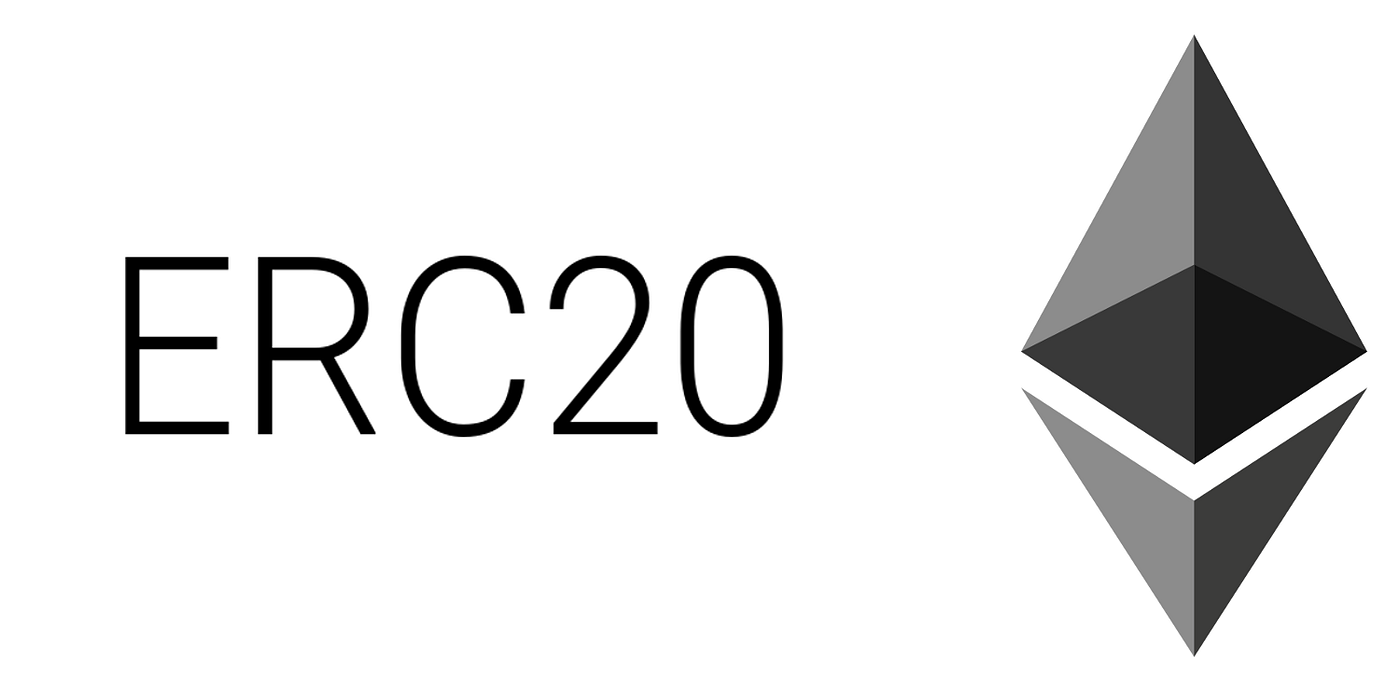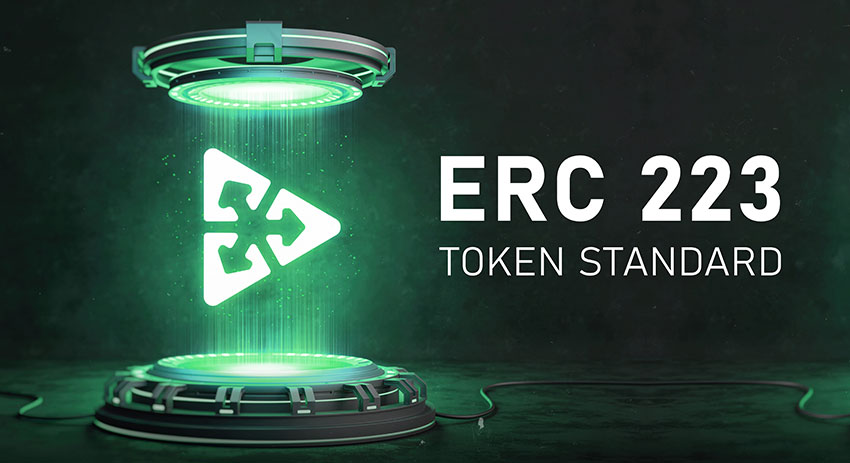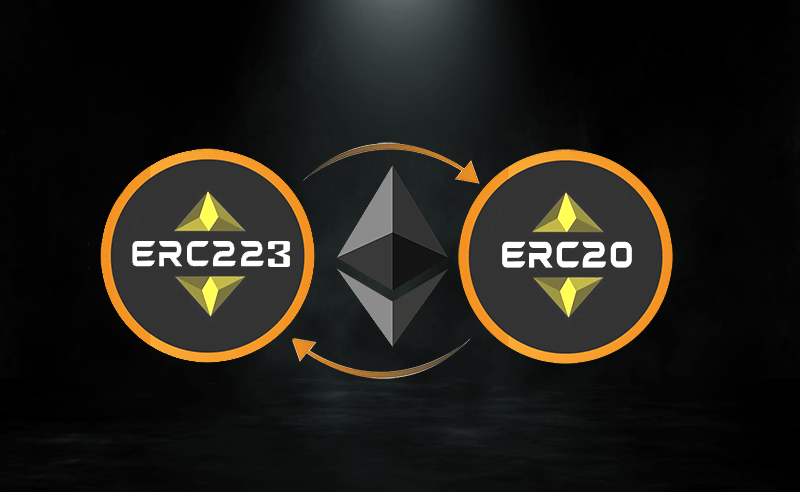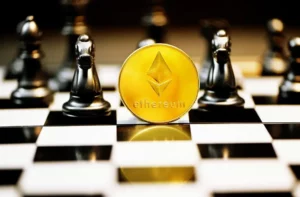Ethereum is one of the most preferred choices for launching crypto projects.
Whether you want to create dApps, DeFi, NFT, or smart contracts, Ethereum can help you.
And to ensure that every crypto project is built on the Ethereum network, crypto developers must follow specific standards.
These standards are known as ERC or Ethereum Request for Comments.
These standards provide guidelines and specifications for creating and implementing smart contracts, NFTs, ERC tokens, or other Ethereum network blockchain projects.
What is the ERC-20 Token Standard?
Before we talk about what an ERC-223 token standard is, it is essential to know about the ERC-20 token standard first.
The ERC-20 standard is a rulebook with many rules and guidelines for creating and issuing smart contracts on the Ethereum blockchain.
ERC-20 stands for Ethereum Request for Comment 20.
It contains a common list of rules Ethereum tokens must follow to enjoy a seamless interaction between different tokens within the Ethereum ecosystem.
ERC-20 tokens are also blockchain-based assets with value and can facilitate transactions between two parties like any other cryptocurrencies.
However, the only difference is that instead of running on their independent blockchain, ERC-20 tokens use the Ethereum blockchain.
The rules and regulations contain a list of functions developers must use and implement to ensure that ERC-20 tokens work perfectly in any Ethereum environment.
These functions relate to how tokens are transferred between addresses, how data within each token is accessed, and how users can access data about the token.
What is an ERC-223 Token Standard?
The ERC-223 is a better version of the ERC-20 token standard.
The 223 version was created to solve issues related to transferring and handling tokens.
The ERC is Ethereum Request for Comment, and 223 is the unique proposal identifier number.
One of the key improvements of the ERC-223 token standard is the prevention of token loss, which can occur with ERC-20 tokens if they are sent to a smart contract that is not designed to handle them.
The ERC-20 tokens would get lost in the void with no recovery plan in such a case.
However, the ERC-223 standard solves this issue by introducing a mechanism that checks whether the recipient of a token transfer is a regular wallet address or a smart contract.
If the recipient is a smart contract, it checks whether it can handle ERC-223 tokens using the tokenFallback function.
If the recipient does not have this function, the transaction gets rejected and prevents token loss.
Apart from preventing token loss, ERC-223 has optimized the transaction process by combining the steps of contract execution and token transfer into a single transaction.
As a result, it reduced the transaction or GAS fees and increased efficiency.
Technical Specifications of the ERC-223 Token Standard
- Unified Transfer Function: ERC-223 uses a single transfer function that can handle both wallet and contract recipients.
- Enhanced Security: It is designed to prevent token loss caused by the ERC-20 by ensuring that tokens aren’t accidentally transferred to contracts that can’t handle them.
- Gas Efficiency: ERC-223 is more gas-efficient, combining the two-step transfer process of ERC-20 into a single one.
- Backward Compatibility: ERC-223 is backward compatible with ERC-20, which supports all ERC-20 functionalities.
- Minting and Burning: ERC-223 includes extensions for minting (creating) and burning (destroying) tokens, allowing for flexible supply management.
ERC-223 vs ERC-20: Understanding the Differences
Both ERC-20 and ERC-223 play a crucial role in the Ethereum ecosystem.
However, both the token standards have a lot of differences.
These fundamental differences are:
- Token Transfer Mechanism:
The key difference you see is how ERC-223 handles token transfers.
On one side, ERC-20 tokens will be sent to any Ethereum address, including smart contracts.
If tokens are sent to a contract not designed to handle them, they will get lost forever.
However, ERC-223 solves this issue by introducing a mechanism that first checks if the recipient address can handle the transaction, and only then can it proceed to complete the transfer, preventing token loss.
- Prevention of Token Loss:
ERC-223 comes with the ability to differentiate between wallet addresses and contracts.
Thanks to the tokenFallback function, which first checks the recipient address and prevents token loss.
However, this feature isn’t available in the ERC-20 token, and this is what many developers consider a bug.
But later, it was fixed with the advent of ERC-223.
- Gas Efficiency:
ERC-223 is also much more gas-efficient than ERC-20.
The ERC-20 token standard requires two steps for a token transfer: an approval transaction and the actual transfer transaction.
As a result, it attracted higher gas fees or transaction fees.
However, ERC-223 combined both steps into a single transaction.
So, you will only have to pay gas fees for a single transaction.
- Backward Compatibility:
ERC-223 is also backward compatible with ERC-20.
This means you can use ERC-223 tokens wherever ERC-20 is accepted.
However, it is not true the other way around.
You cannot use ERC-20 tokens where ERC-223 tokens are required.
Advantages of ERC-223 Tokens
The ERC-223 is the updated version of the old ERC-20 token standard and has several improvements.
As a result, you get to see some of the key advantages, such as:
- Prevention of Token Loss:
One of the key reasons why the ERC-223 token standard was created is to prevent any token loss.
In the ERC-20 token standard, tokens can be permanently lost if the receiver can’t handle the incoming token transfer.
However, ERC-223 fixes this issue by verifying the recipient beforehand to prevent any accidental token transfer and, ultimately, any token loss.
- Improved Efficiency:
The ERC-233 tokens are more efficient when it comes to transaction processing.
In the older version, two transactions were required to transfer tokens to a contract – one for approval and the other one for the transfer.
These two transactions attracted a higher transaction fee.
However, ERC-223 solved this issue by combining both transactions into one, eventually reducing gas fees and transaction speed.
- Enhanced Security:
ERC-223 also implements an extra layer of security as it can make a difference between a wallet address and a smart contract.
As a result, the ERC-223 token standard can verify the wallet address beforehand and minimizes the risk of any token being accidentally sent to any incompatible contracts.
- Backward Compatibility:
The ERC-223 tokens also come with backward compatibility.
You can use ERC-223 tokens for any crypto product where ERC-20 tokens are accepted.
As a result, you won’t face any issues while making transactions using the ERC-223 tokens.
- Simpler and Cleaner Code:
If you are a developer, you will enjoy working with the ERC-223 token standard.
It comes with a simpler and cleaner code, making it a more efficient solution.
- Reduced Blockchain Bloat:
By combining transactions and reducing the need for multiple transaction steps, ERC-223 helped reduce the blockchain bloat.
This efficiency benefits the overall health and speed of the Ethereum network.
- User-Friendly:
Finally, ERC-223 is also much more user-friendly.
If you are not aware of the technicalities of blockchain transactions, then the ERC-223 token standard can prevent you from accidental token loss.
Also, it makes the overall token transaction process more secure and easy to go about.
Challenges and Limitations of ERC-223 Tokens
Although there are many benefits to ERC-223 tokens, they also come with their challenges and limitations.
Hence, as a developer or user of this token standard, you must be aware of it before you adopt it.
- Adoption and Compatibility Issues:
One of the key problems with ERC-223 tokens is the adoption rate.
On the one hand, ERC-20 is already widely popular, used, and accepted in the Ethereum ecosystem.
Hence, moving to the new token standard can be slow.
Another problem is that ERC-223 is backward compatible with ERC-20 on one side.
But it is not the other way around.
As a result, ERC-223 tokens might face compatibility issues with some ERC-20-only services and contracts.
- Smart Contract Upgrades:
For ERC-223 tokens to operate properly, existing smart contracts must have the tokenFallback function.
This will require the smart contracts to be updated and modified to support the new token standard.
As a result, it adds another layer of complexity to the picture and makes the process time-consuming.
Also, not all the smart contracts are willing to or able to make the changes.
- Learning Curve for Developers:
Any new tech comes with its learning challenges.
So before developers can consider implementing the ERC-223 standards, they must learn about them and understand the functionalities that differ from ERC-20.
As a result, it would be a slow process for developers to adopt the new technology.
Conclusion
The ERC-223 token standard is a rulebook for developers for developing tokens, NFTs, smart contracts, etc, on the Ethereum Network.
It is the advanced version of the older ERC-20 tokens and is designed to overcome the shortcomings of the ERC-20 standard in terms of security and efficiency.





